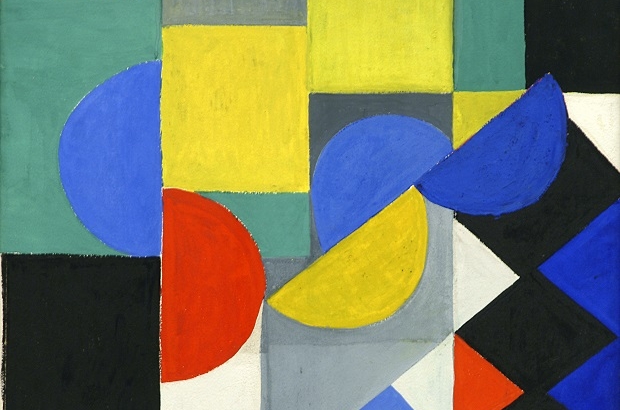- Daily & Weekly newsletters
- Buy & download The Bulletin
- Comment on our articles
La Boverie in Liège explores abstraction in showcase of Belgian and international artists
Abstraction in its multifarious forms has produced some of the most memorable and influential art of any era. La Boverie’s new show is an unashamedly candid exploration of why the movement continues to resonate.
Abstrait is also a celebration of Belgian artistic talent. Around half of the 100 works on display are from the city of Liège’s own collections, with the three local curators employing a joyful and subjective approach to their selection.
After high-profile international shows that have dominated the modern and contemporary museum’s programming, including Andy Warhol, hyper-realism and Bill Viola, this latest offering is a timely reminder of abstraction's pertinence.
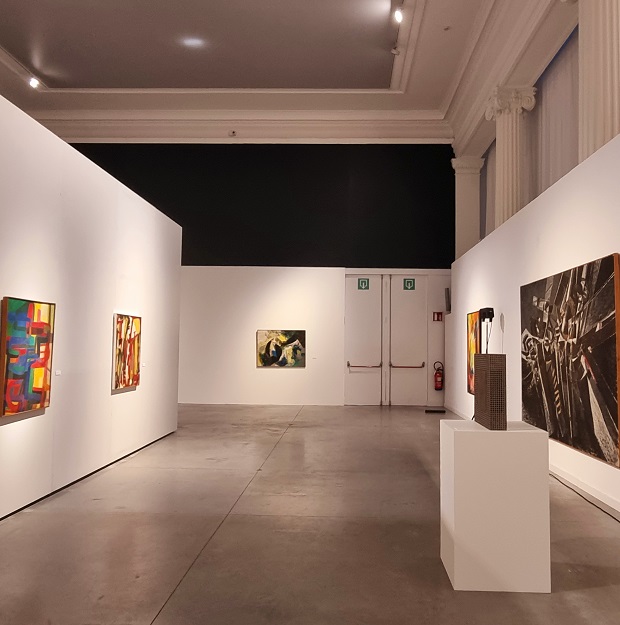
Neither chronological nor exhaustive, it is highly-accessible with sections aimed at guiding viewers through the main tenets of the movement: gestural marks, form and colour, signs and fusion. These are the techniques that many abstract artists employ in their depiction of non-figurative visual reality to communicate emotions, ideas and experience.
As poet and playwright Oscar Wilde commented: “Art is always more abstract than we fancy. Form and colour tell us of form and colour - that is all.”

Serving as a starting point at the entrance of the 1,000m2 space are three works by international artists: Wassily Kandinsky (Improvisation, 1914) and fellow innovators Paul Klee (Ancient Sound, 1925) and Kazimir Malévitch (Carré rouge, 1915). The three giants of 20th century art are presented in dialogue with the minimalist red sculpture Barque Ardente by Polish artist Aliska Lahusen. They set the tone for the seamless flow of exceptional and surprising works that follow.
In the first section ‘Expression of gest’, a riot of colour and fluidity exemplifies artists’ pursuit of freedom. Each stroke is an attempt to express an emotion outside the constraints that reigned in the world of art until the beginning of the 20th century.
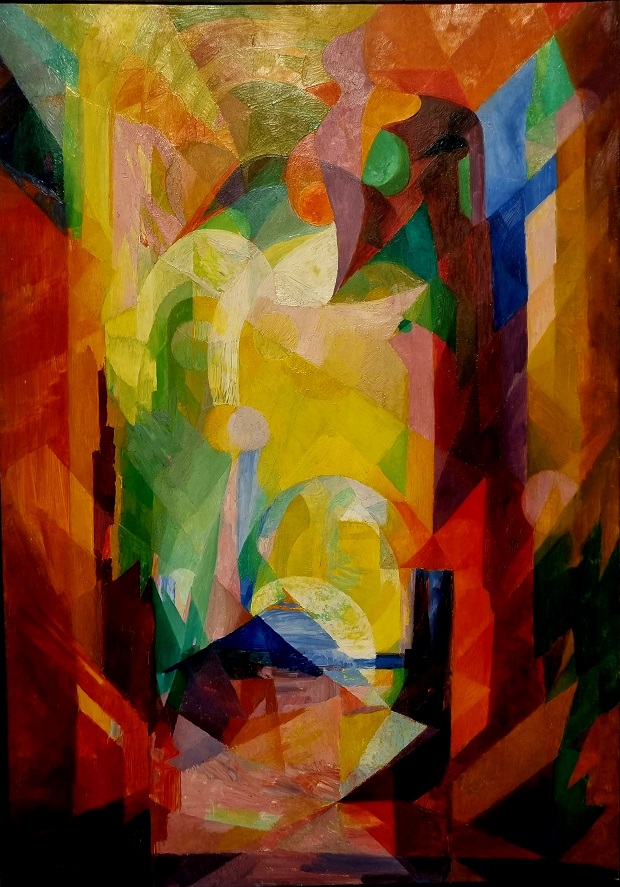
Admirably matching the creativity of their international cohorts are the Belgian artists represented. Anne Bonnet, Maurice Estève, Joseph Lacasse (Rayonnement, 1931, pictured) evoke vivacity and movement. The darker palettes of Englebert Van Anderlecht, Nicolas de Stael and Georges Collignon offer a window into interior lives, while a minimalist 1980s acrylic by Brussels artist Marthe Wéry is a fine study of spatiality and subtlety.
Moving onto ‘Mastery of form’, shapes dominate, from straight lines, circles and squares to triangles and other geometric representations. Ukraine-born French artist Sonia Delaunay’s Composition n°450 (main image) is but one example. This is a visual language that eschews perspective and plays with symmetry and asymmetry. Artists are not restricted to canvases; sculpture and beautifully textured textile wall hangings include French artist Jean-Pierre Pincemin’s graphic and exploratory design on a fragment of cloth.
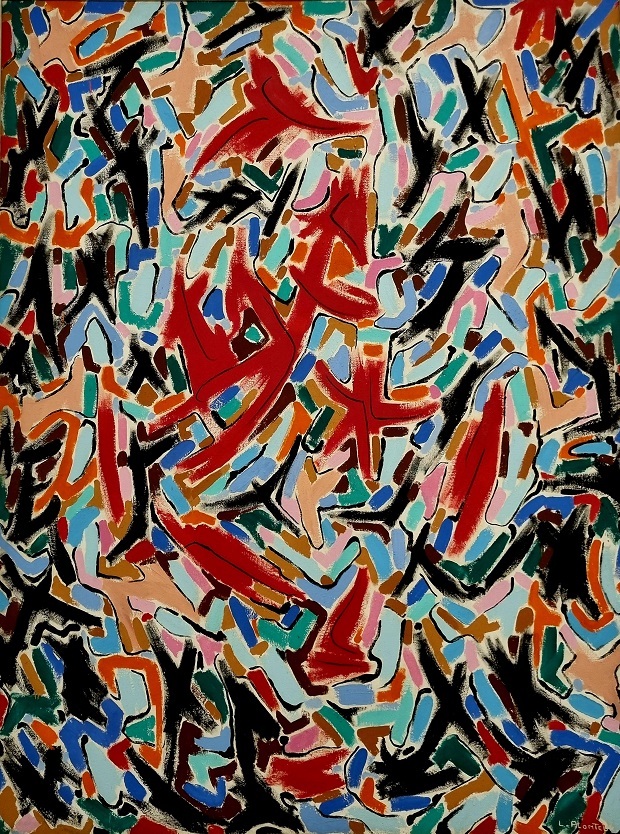
In ‘Trace of the sign’, abstraction takes a conceptual form as artists apply economy to their representations of reality. One of the few unifying themes is the diversity this approach takes. Léopold Plomteux was a Belgian painter and founder member of the influential Cobra avant-garde movement who explored spontaneity of expression. This is evident in his Composition 20ème siècle (pictured), a characteristically intuitive use of paint and strong colour.
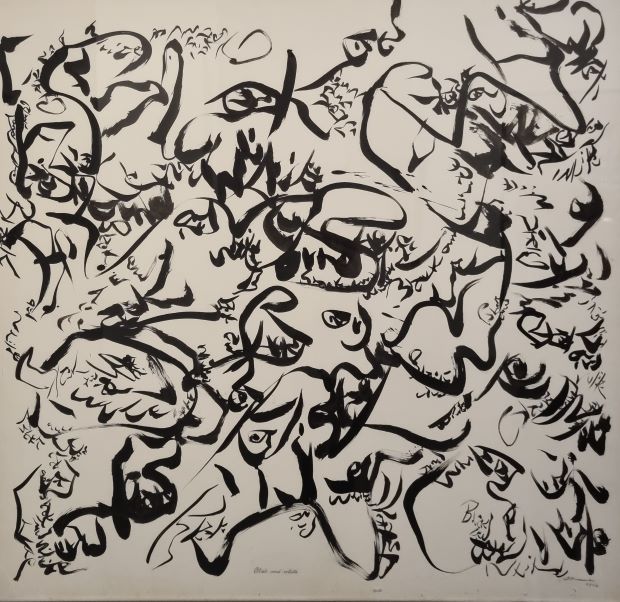
Cobra co-founder Christian Dotremont employed a black-and-white palette in Blaek, 1972 (pictured), oscillating between painting and writing, and an example of his experimental logograms. “[It’s not about seeking] beauty or ugliness, but verbal-graphic unity,” he once said.
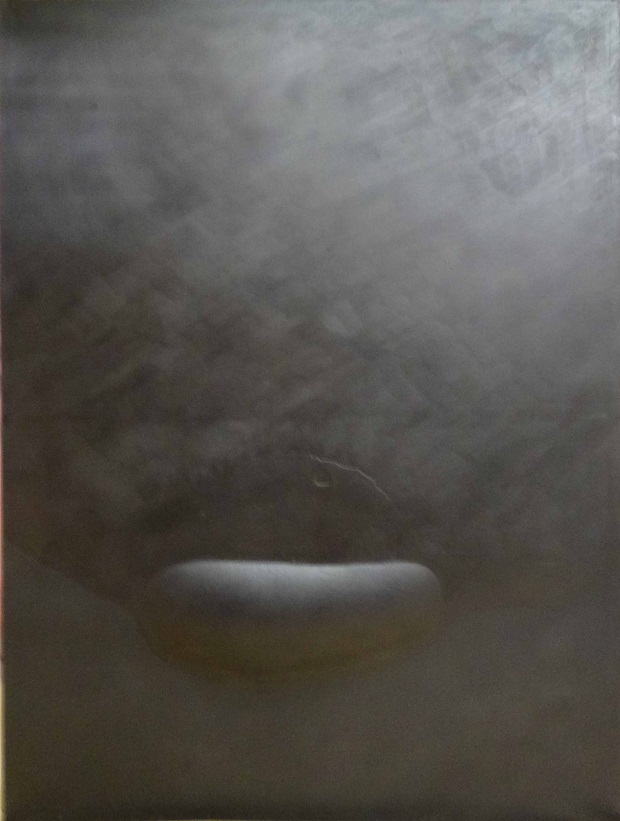
Finally, in ‘Fusion of looks’, the exhibition initiates visitors into pure and minimalist examples of abstraction. The oeuvre of Japanese avant-garde painter and illustrator Takesada Matsutani includes monumental canvases of pencilled streams, as in World in black pencil – 2, 1979 (pictured). The study in shading and lights shows an absence of external references that is a trademark of works here and their greater focus on depicting inner worlds.
Liège artist and exhibition co-curator Martine Droixhe contributes her canvas Sans titre, 2007, a monochrome that invites the viewer to pause and fully absorb the experience of staring into its seeming blackness.
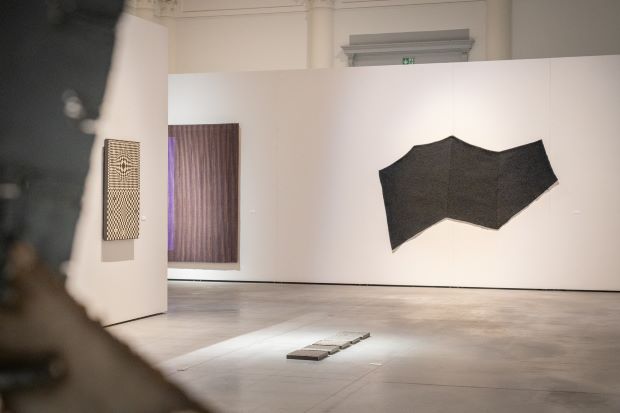
The balance of artists and works displayed in the four sections reinforce the sense of abstraction as a source of freedom and distillation of form and colour. Marc Sterkendries, co-curator along with Françoise Safin, credits the trio for the balanced selection. “We are very different personalities but very quickly we got on and were in agreement.”
When delving into the city’s extensive collection of art, they focused on “atypical works” by artists that add an element of unpredictability to the exhibition.
Showing alongside Abstrait is the parallel exhibition Cécile Miguel. Au creux des apparences. The retrospective of some 100 multimedia works by the Belgian artist (1921-2001) is a revelation. She was a prolific and highly singular painter and collagist from the Hainaut province who mixed with Picasso’s circle but deliberately shied away from the limelight.
Abstrait + Cécile Miguel
Until 18 August
La Boverie
Liège
Photos: (main image) ©Sonia Delaunay, Musee des Beaux Arts de Liege, La Boverie; Kandinsk, Malevitch and Lahusen ©Sarah Crew; ©Denis Clossen; Joseph Lacasse Rayonnement ©Sarah Crew; Léopold Plomteux ©Sarah Crew; World in black pencil ©Takesada Matsutani ©Galerie Faider; View of the show ©City of Liège












